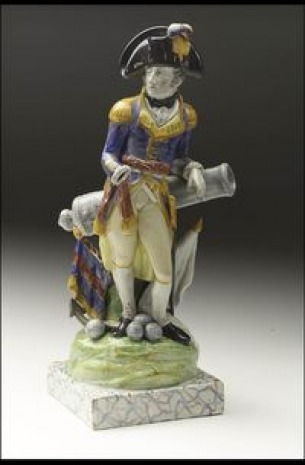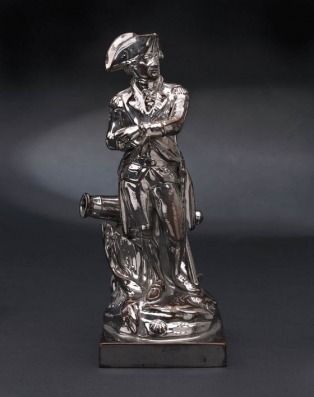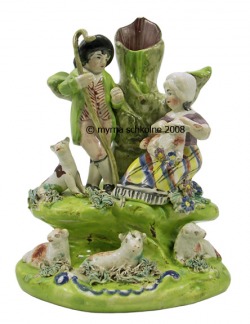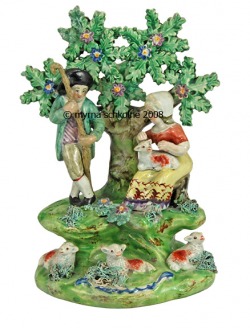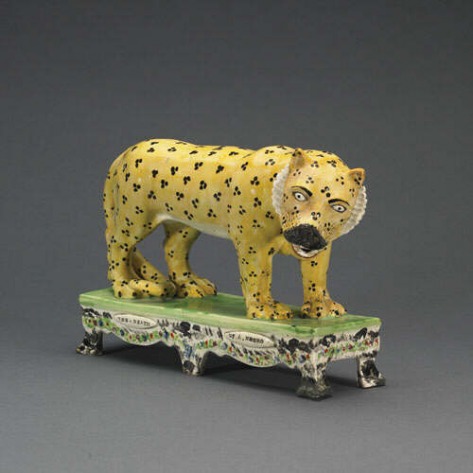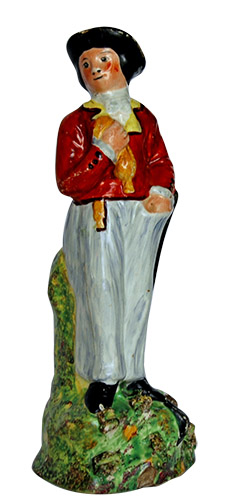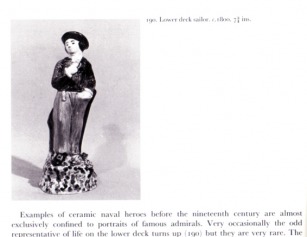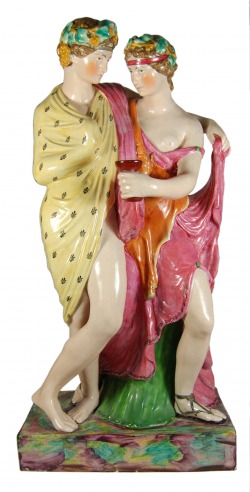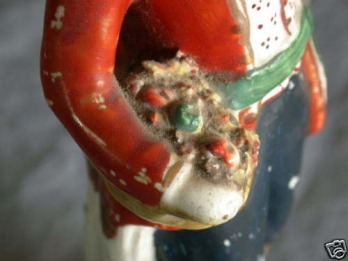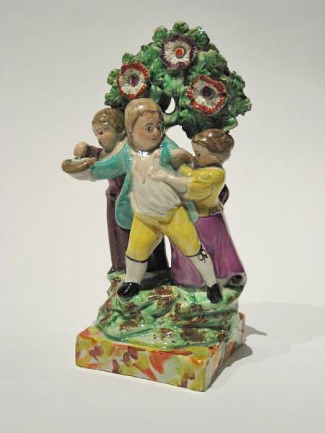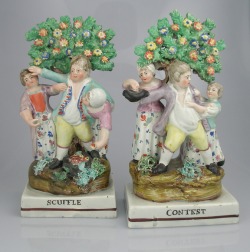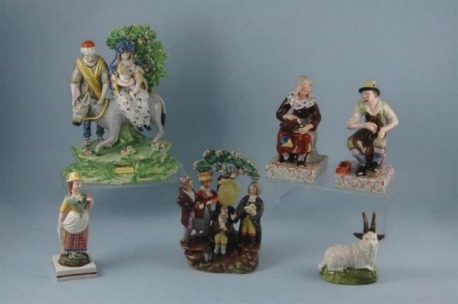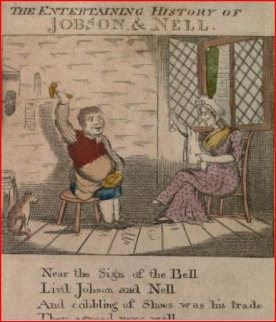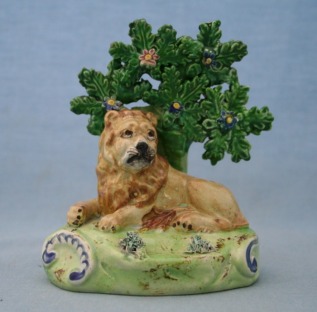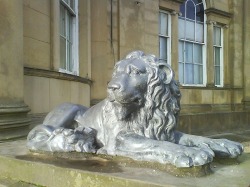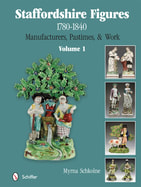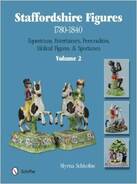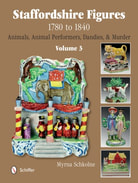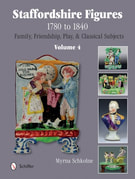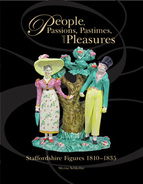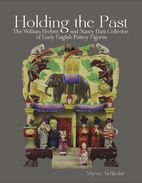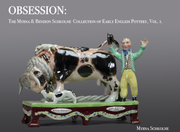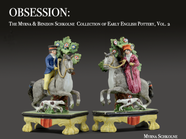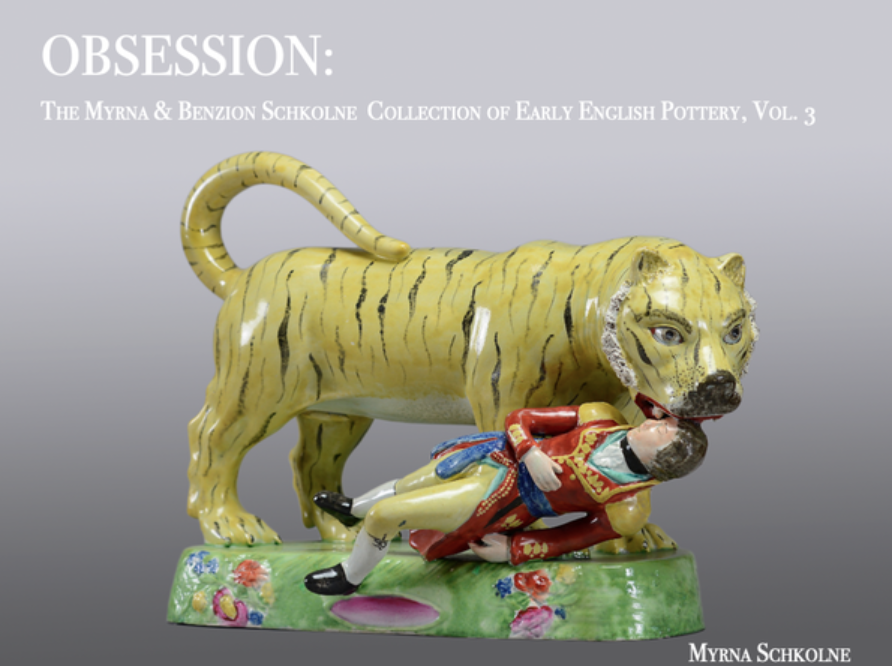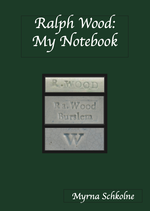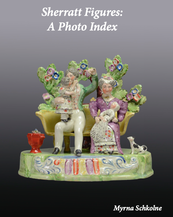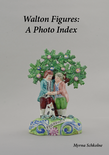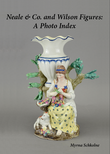Don't you love the figure of an officer below? The first example I encountered belonged to a UK collector, an older gentleman. He loved his example--rightly so--but he believed it to be Admiral Rodney. I was not so sure. The title sounded more like a sales pitch to me, so I started digging around.
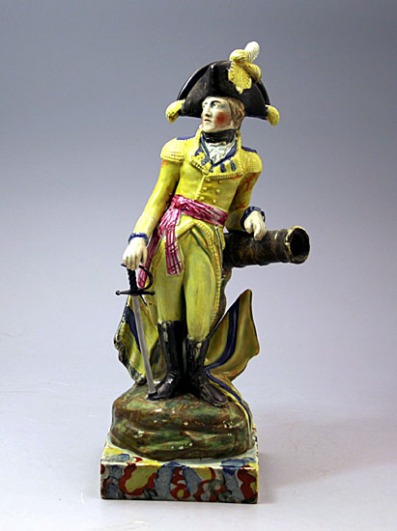
From the stock of John Howard. H: 12 1/2".
I found examples of similar figures in assorted books, each authors claiming it as a different hero (the Duke of Wellington, the Duke of York, Nelson....take your pick!) but evidence for a link is far from convincing.
Two examples in the National Maritime Museum are both described as Nelson. Intriguingly, one example lacks a hand, but not an arm. We all know Nelson lost his arm in 1794, but the Museum's figure appears to have incurred like the loss of a hand in a latter-day battle, rather than at manufacture.
Best I can tell, the two figures in the National Maritime Museum are from similar molds parts, assembled differently. The silver luster figure is attributed to Wood & Caldwell, but I am uncertain whether it is actually marked so. That the figure is lustered is significant. The technique of silver lustering was done using platinum and it was first introduced commercially in 1805. So we know that the lustered figure was made some time after 1805. Note that it, like John Howard's figure, has two good arms. If the figure was intended to portray Nelson, surely it would have been made to show the Admiral's sacrifice of a limb more than 10 years previously?
I tend to think that this figure is NOT a British officer. If he were, he would sport a garter star on his breast. Also, the sash worn as a belt over the coat is typical of continental army uniforms. Could our hero just perhaps be intended to be Napoleon? Or could he portray one of the European military leaders allied with Britain in those war-torn years. Or just perhaps he represents an actor from one of the great military renactments popular on the London stage in the early 1800s.
I have asked one or two amateur period uniform enthusiasts about this figure, and they tend to lean toward it representing a continental officer. If you have any thoughts, please share!
